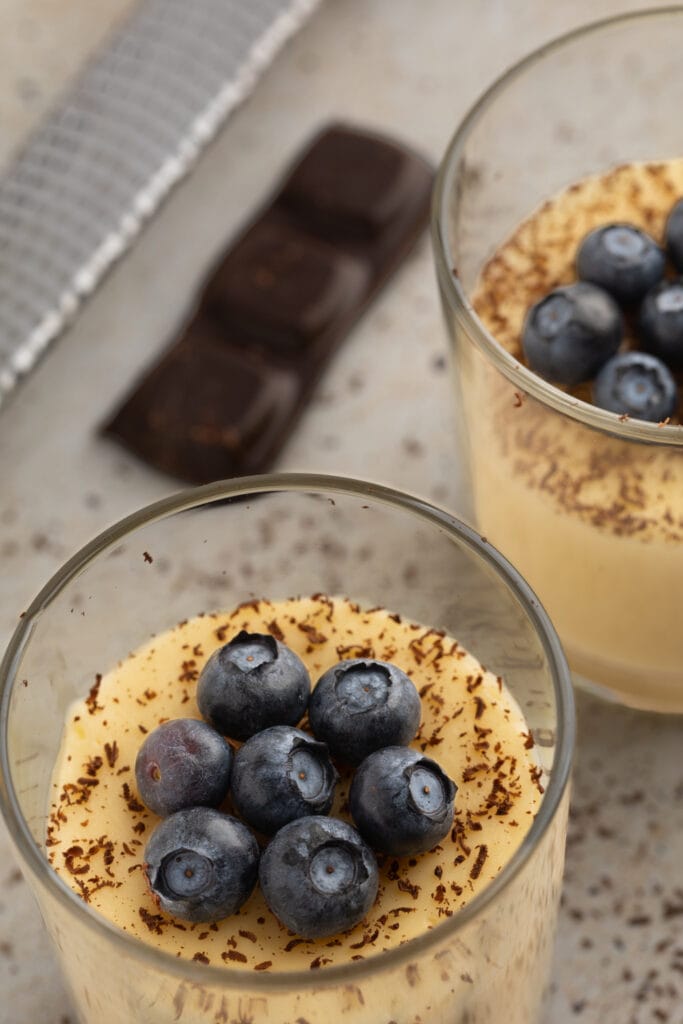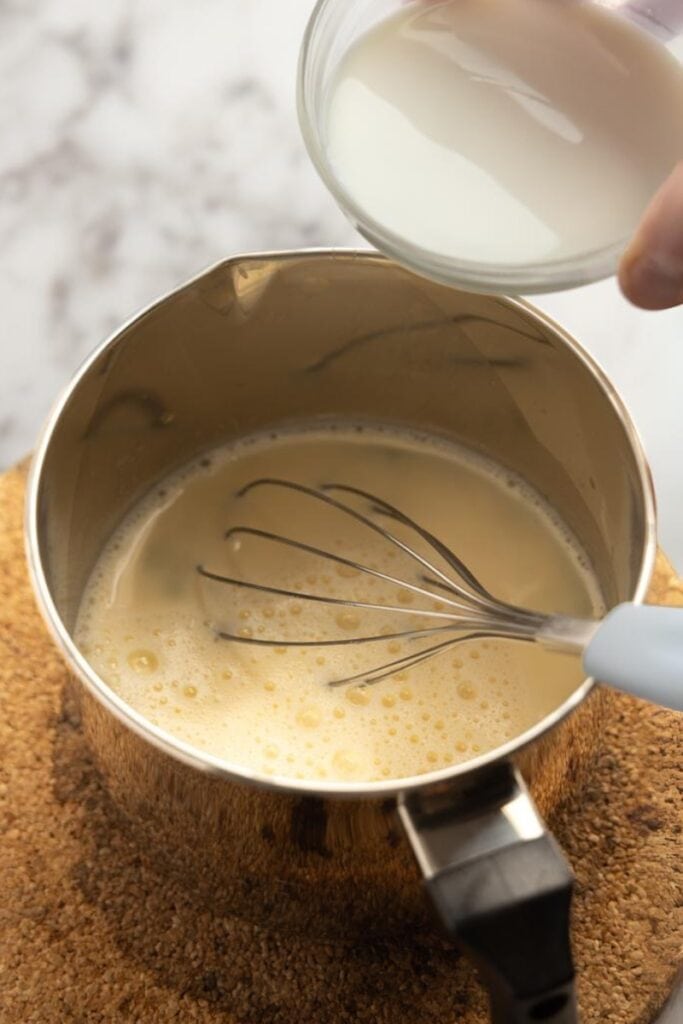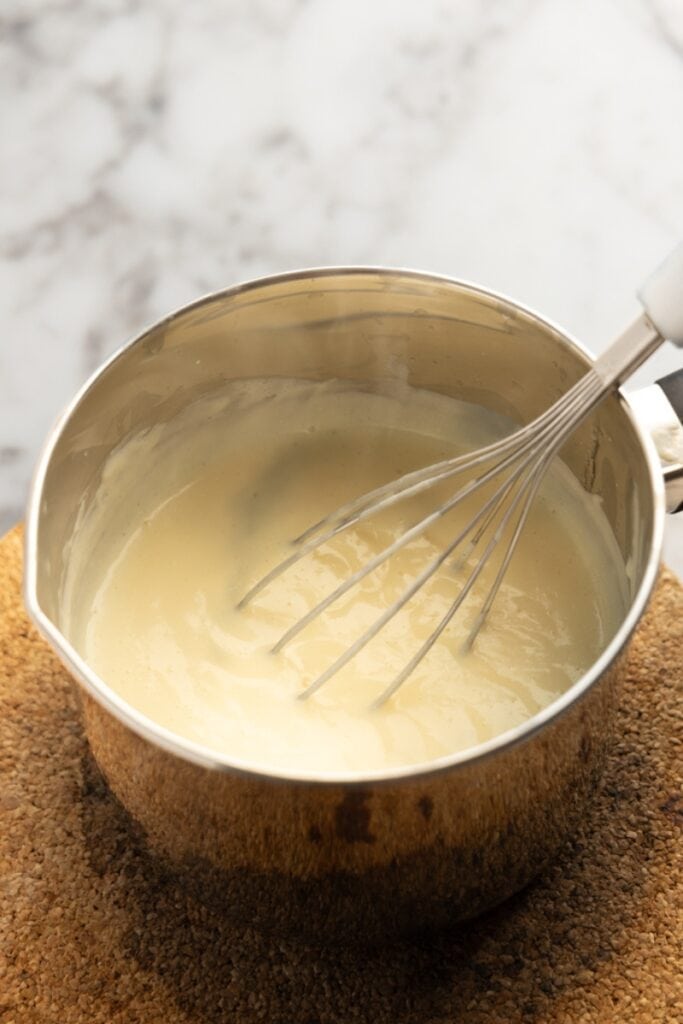Starch 101: All You Need to Know about Starches in Cooking
This post may contain affiliate links. Read our privacy policy.
Here’s everything you need to know about starches in cooking.
This Q&A article covers all the questions about starches that I had and the answers I figured out. It mainly serves as a reference, so I don’t have to repeat the same information in all recipes that use starches.
Let’s jump right in.
How to Make a Starch Slurry
When working with potato starch or cornstarch, we typically make a starch slurry that we then add to whatever we’re cooking.
To make a slurry, pour cold water into a small bowl, then add the starch and whisk together. A 1 to 2 ratio of starch to water (per volume) is a good starting point.
The starch separates from the water quickly, so it’s best to prepare it right before you need it and use it right away. Otherwise, you’ll need to whisk everything again.
 Make the starch slurry
Make the starch slurry Pour in the mixture
Pour in the mixture Stir to thicken evenly
Stir to thicken evenly
Pro tip: adding starch to water when making a slurry is easier than doing it the other way around. If you start with the starch and then add water, the water will likely cause the starch at the bottom to form a compact, hard paste that takes a bit of extra time to break up and whisk.
In my recipes, I typically ask you to reserve a certain amount of water (or milk in the case of puddings) when prepping the ingredients, which we’ll use to make the slurry later on.
Working with a Starch Slurry
Once you have your starch slurry ready, start by pouring about 3/4 of it into the liquid, stir it vigorously, and check if the resulting texture is thick enough for your needs. If not, add the remaining slurry while stirring.
If it’s still not thick enough, prepare another slurry and add it bit by bit (still stirring) until you’re satisfied with the results.
Using a Starch Slurry vs. Adding Starch Directly
We make the starch slurry before adding it to a hot liquid to avoid clumping. The high temperature gelatinizes the starch, so if we add starch directly into hot water, it’ll start gelatinizing before we can spread it evenly throughout the liquid. That’s what causes clumps.
The slurry disperses the starch evenly in a small amount of water, making it much easier to then disperse the starch in the dish you’re cooking before it gelatinizes.
Cornstarch vs. Potato Starch
Can You Use Cornstarch and Potato Starch Interchangeably?
Sometimes. Despite what most articles on the Internet tell you, one isn’t a direct substitute for the other.
You can substitute potato starch for cornstarch and the other way around if you’re using the starch as a binder (e.g. in a meatloaf recipe) or a stabilizer (e.g., in stabilized whipped cream). But you can’t do that if you’re using it as a thickening agent.
The thing is, potato starch is a stronger thickening agent, so you need less of it to thicken your liquids. That’s why in my vanilla pudding recipe, I suggest different amounts of starch depending on which one you use.

Cornstarch and Potato Starch Conversion Rate for Thickening
You need 4 tablespoons of cornstarch for every 2 tablespoons of potato starch if you’re using the starch for thickening. In other words, you need 100 percent more cornstarch (measured by volume) than you need potato starch.
Based on my tests, you need about twice as much cornstarch to get the same thickening you get from potato starch. Here’s a video comparison of the two in one cup of water:
That’s why in my recipes, I typically suggest doubling the amount of starch if you’re converting from potato starch to cornstarch or halving it if you go the other way around.
Thickening Temperature Differences
According to SeriousEats, cornstarch begins to gelatinize (in water) around 144–162°F (62–72°C) and fully gelatinizes around 203°F (95°C). Potato starch, on the other hand, has a slightly lower gelatinization temperature of around 140–149°F (60–65°C).
While the temperature difference doesn’t seem that large, potato starch gelatinizes not only sooner, but also much more quickly. You add the starch slurry, give the mixture you’re thickening a whisk, and suddenly the whole thing is gelled. With cornstarch, the process is slower, and it takes longer for the liquid to fully thicken.
Or at least that’s my experience.



